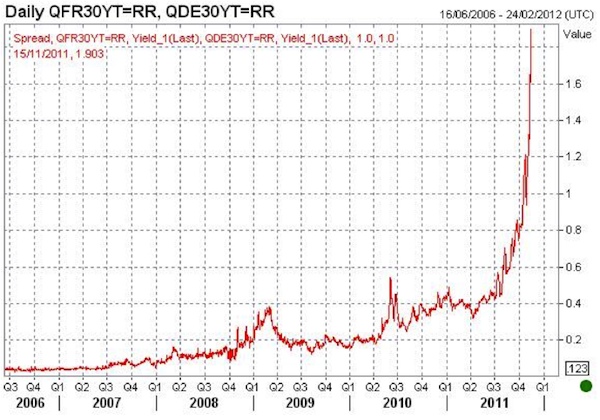Almost 1600 years ago the first signs of Rome’s demise appeared in the horizon. Around 411 AD the Visigoths under Alaric’s leadership attacked and ravaged the city. Smoking ruins and destructions was left behind. This was not the first sign that the end of the Western Roman Empire was approaching. Twenty years prior to that, the Gauls had done about the same.
By Alaric’s time the attacks were met with appeasement. The priority of the policy makers was no longer about production, but rather about consumption and leisure. Standards had declined and an identity crisis was running deep in the empire. Rome was relying on soft defenses. Just before the Visigoths attacked, the Roman Senate tried to buy them off with gold. But the Visigoths along with the others (Huns, Suebi, Ostrogoths) had already penetrated the empire, so by the time that the Vandals led by Gaiseric invaded the city, the Romans had fled and evacuated the capital of their empire.
What is the relevance of the above for the Euro Zone of today? First, the previous crisis of 2007-’08 (the Gaulian attack) seems that did not teach them anything about hard defenses, reconstruction, higher standards, and the proper roles for the institutional players such as the ECB and nowadays for the EFSF.
Second, the co-mingling with other tribes eroded their identity, and the swaps and continuous usage of derivatives is proof that all along they have treated the symptoms and not the causes of the crisis. The fact that EU banks resorted to swaps of questionable value (before even their need for refinancing $4 trillion of their own bonds has surfaced) in order to draw liquidity from the ECB, points to pressures on their assets. This forces them to collateralize lower quality “assets” which in turn are swapped with other financial institutions at a discount, creating schemes of counter-party risks and putting further pressures on assets while sending a signal that liquidity dries up in the EU.
Third, the flight to quality (Rome evacuation by its inhabitants) is normal meaning that the USD is seen as safe haven, cash is king, while downward pressures may affect – temporarily – all asset classes.
Last week we wrote that the next stop of the Athens-Rome express would be Paris. In the last few days we saw that the bondholders are abandoning the French bonds and that the French spread against German Bunds reached an all-time high since the Euro was introduced. As the chart below shows that spread has now taken a parabolic trend and it continues rising.
Efforts by ECB to buy down the Italian and Spanish spreads have not paid off. The markets view them as temporary soft measures of appeasement, rather than as strong determined actions by an institution who knows its role and place in the Euro Zone (identity crisis).
As investors fly to safety and demand cash, opportunities in real/tangible safe havens will surface and will become more attractive as their prices are pressured too.
Ode to the road the leads to the Battle of Plassey which secured the “Jewel in the Crown” for another empire about 1346 years after Alaric exposed the weaknesses of soft assets in the old Roman empire.

